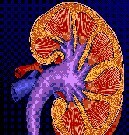Millions of Premature Deaths Tied to Air Pollution
Reduction in fires related to deforestation may prevent deaths in South America
Addition of Orlistat Benefits Obese Patients With T2DM
Greater weight loss and improved glycemic control compared with lifestyle changes alone
Metabolic Syndrome Common in Young Women With Lupus
Antimalarial protects against metabolic syndrome, countering steroid effects
Panel Develops Criteria for Appropriate Use of PICCs
RAND/UCLA Appropriateness Method used to rate scenarios related to PICC use
PCPs Report Mixed Feelings About Recent Health Care Changes
Primary care providers mostly positive about impact of health information technology, divided on ACOs
Meta-Analysis Links Adiposity to Increased Risk of Meningioma
High versus low levels of physical activity linked to reduction in risk of meningioma
Tai Chi Improves BP Control, Quality of Life in Older Adults
But does not help with metabolic syndrome levels, dyslipidemia, hyperglycemia
Exercise Counters Fatigue-Related Mood Decline in Arthritis
Physical activity benefits mood in both osteoarthritis, rheumatoid arthritis patients
Risk of Colorectal Polyps Tied to Blood Pressure Medications
Risk increases with the number of antihypertensive drugs taken
Hospitalized Patients With CKD Often Unaware of It
Higher rate of awareness of chronic kidney disease in patients with advanced stage but still low



















